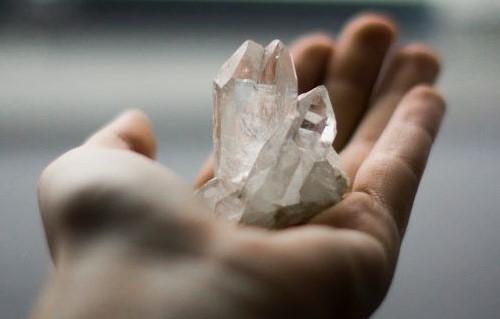Thanks to modern science and advanced quantum physics, we now understand that everything around us is made of energy. Whether it’s a solid, liquid or a gas – everything is composed of molecules that contain potential energy. And these molecules move around and vibrate on molecular levels we cannot see with the naked eye or even feel with our bodies.
Frequency
In order to understand how crystals vibrate, we must first define frequency. When discussing vibration, frequency is commonly defined as the number of repetitions of a periodic process, within a unit of time: such as the number of complete oscillations per second.
Oscillation
In this case, we’re referring to waves of energy that oscillate from a solid, such as a crystal. When something is oscillating it is moving back and forth from one extreme to the next. An example would be the highest and lowest points of a jump rope being wiggled at one end to create a wave form, moving up and down.
The energy of elastic waves is quantized in something called a phonon. Coined by Soviet physicist Igor Tamm in 1932, physics defines a phonon as the collective excitation in a periodic elastic arrangement of atoms or molecules in condensed matter.
Vibrating Energy
We can think of a phonon as a packet of vibrating, potential energy that results in a natural frequency state, responsible for the vibration being emitted. This means that each type of crystal, according to its own unique properties, has a specific frequency at which it vibrates naturally. Phonons play a key role in the thermal and electrical conductivity properties of solid matter, like crystals. Their respective frequencies/vibrations can be altered when exposed to different conditions like temperatures and stressors.
Crystal Structure
By nature, crystals have the most stable structure known to science. Their lattice-patterned uniformity of molecules can be repeated endlessly. The stable lattice structure is one of the reasons we continue using crystals in the mechanics of daily items that require steady energy transmission like radio transmitters, clocks, TV transmitters, computers, etc. These devices use crystal-controlled oscillators to produce electronic signals at specific and steady frequencies required for power.
The crystals used in oscillators must be cut in such a way they may facilitate the desired frequency for precise oscillation. The thicker the cut, the lower the frequency response. And the opposite is also true. The thinner the cut, the higher the frequency.
This is not to say that any crystal can be used in crystal-controlled oscillators. There are specific types of crystals that are better suited for their piezoelectric properties. The piezoelectric effect is the property of a crystal by which mechanical stress produces electric charges. Common crystals that exhibit this property include Rochelle salt, tourmaline and quartz. But remember, all crystals vibrate.
All Crystals Vibrate
That’s an interesting concept. In essence, a crystal acts as a conduit for stabilizing specific amount(s) of potential energy both surrounding and going through it.
It’s this principle that inspires BioVibe Products. Understanding the stability of crystals and their ability to pass energy through vibration, we create products that harness these frequency properties and use them to interact with the electromagnetic fields emitted from our own bodies and cells.
Sources:

